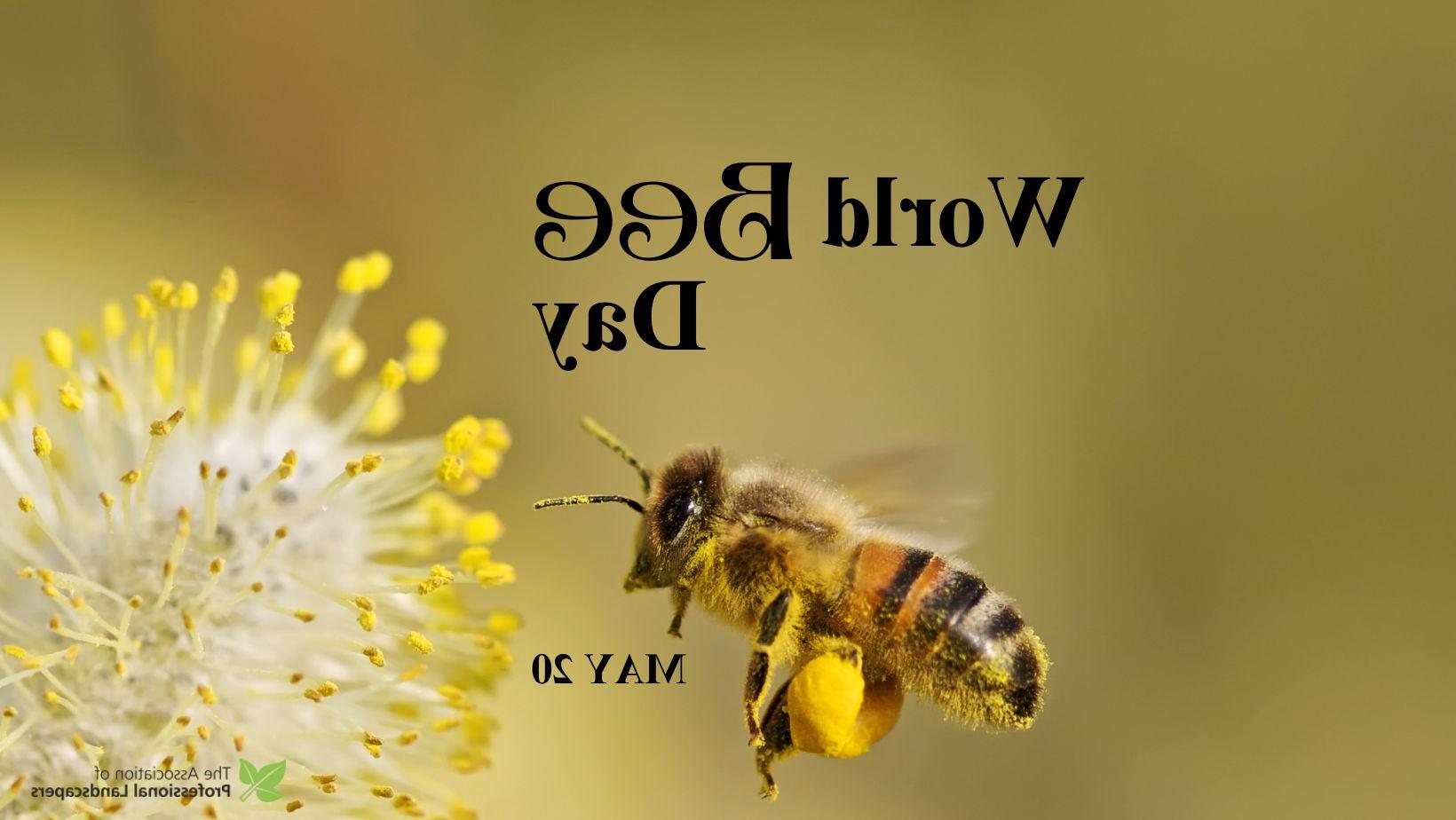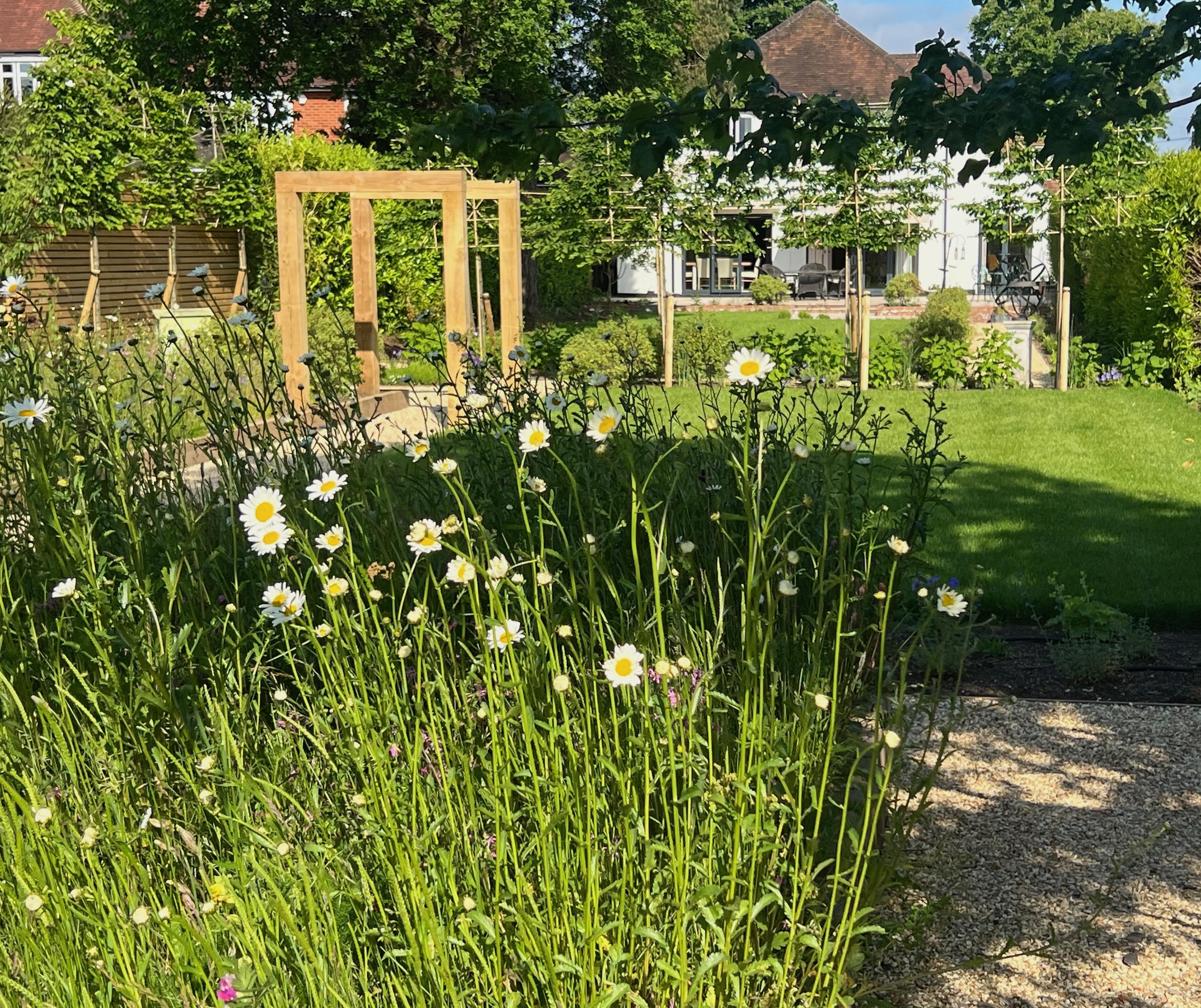
Bee A Hero: How Your Landscape Choices Can Help Bees
May 20th is World Bee Day and following hot on its heels, May 22nd is The International Day For Biological Diversity. Two extremely relevant awareness days that every landscape professional and gardener should take note of. We’ve been investigating how your landscape choices can help bees, not just on those two days, but all year round.
Why Do Bees Matter?
There is no shortage of information on the importance of bees. We know that they pollinate 3/4 of our flowers and are responsible for the successful production of 2/3 of our food crops. Without bees, and other pollinators, we’d need to hand pollinate most of our edible plants.Can you imagine what that would do to food prices?
Bees are not a nuisance to people. They don’t eat our crops, and as far as we know, they don’t spread disease. OK, so a bee sting is unpleasant, but not as common as you’d think. Bees aren’t interested in humans unless we threaten them in some way. There’s no good reason for wanting them gone from our lives. Yet Bee populations throughout the world are in decline.
The reasons behind the demise of these incredible creatures are complex and interlinked. The use of pesticides is not helping them, neither is the increase in housebuilding and infrastructure development. But organisations such as the Worldwide Fund For Wildlife, Buglife, and the Convention on Biological Diversity are in agreement that with awareness, education and some relatively simple actions, bee population decline can be halted, and hopefully reversed.
How Do Your Landscape Choices Help Bees?
The landscape industry is in the privileged position of being able to support bees in subtle, but effective ways. APL members design, build and maintain gardens in towns and villages right across the UK and can strongly influence how bee-friendly a space can be.
Here are a few suggestions to help bees and other pollinators in your landscape projects.
- Introduce a diverse planting palette with a long flowering period. Include lots of pollinator friendly plants such as alliums, sedums, native hedging species, salvia and wildflowers.
- Choose plants that are less attractive to pests such as lily beetles or aphids. That way there will be no temptation to use pesticides in the garden.
- Source plants and trees from nurseries who do not use pesticides in the growing process. The RHS offers a list of such growers here. https://www.rhs.org.uk/wildlife/organic-nurseries
- Create opportunities for habitat. Bee habitats are too diverse to discuss in this blog, but include short grass, longer grasses, wall cavities, compost heaps, beneath tree roots, sand heaps and more. Any of these could be incorporated into landscaping projects, even if they’re hidden from view.
- Consider including living walls and green roofs in your design. They’re a great way to provide forage and create undisturbed habitat.
- Include water - bees need to drink!
- Educate your clients, when people understand bees and their fascinating lifestyles, they are more likely to engage in offering forage and habitat for these marvellous creatures.
- Be imaginative with landscaping materials. Drilling holes into timber fence posts effectively turns them into bug hotels for solitary bees. Whilst strategically placed banks of earth or sand will soon become populated with mining bees. Some bumble bees like to nest under a north facing hedge, others love to make their home in abandoned bird boxes.

Useful Links For Ideas of How To Help Bees
Please note that none of these websites or organisations are linked with the Association of Professional Landscapes and we are not responsible for their content or their views.
BugLife: UK Invertebrate conservation trust established in 2002
https://www.buglife.org.uk/our-work/b-lines/
Convention on Biological Diversity: Global organisation dedicated to promoting sustainable development. https://www.cbd.int/biodiversity-day/take-action/2024
Buzzaboutbees.net: Website full of fascinating information about the types and lifestyles of bees. https://www.buzzaboutbees.net/bumblebees.html
The Grass Roof Company: Innovative ideas for commercial landscaping features that benefit wildlife. https://www.grassroofcompany.co.uk/
The Green Roof Organisation: Independent not-for-profit group offering lots of information on designing biodiverse living roofs.

How successful have your landscaping projects been at supporting bees and other wildlife?
Share your experiences on our Facebook Page.
Picture Credit: APL Awards entry - Raine Garden Design
